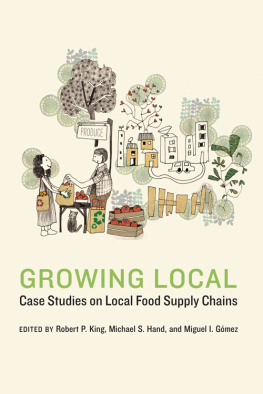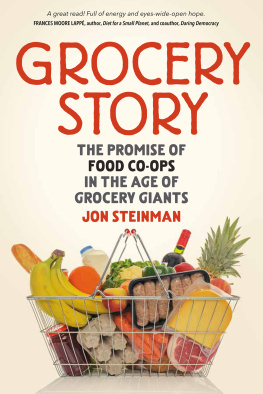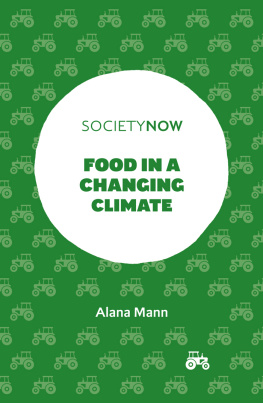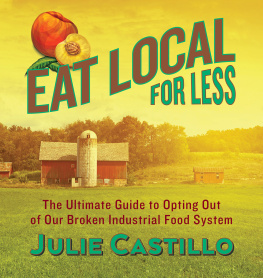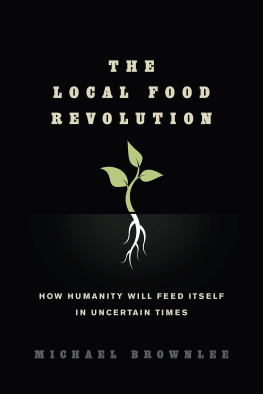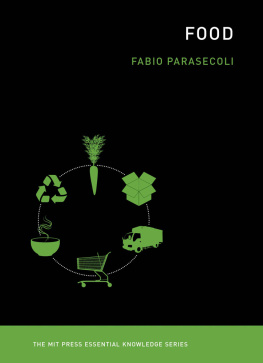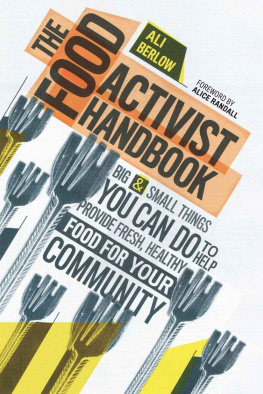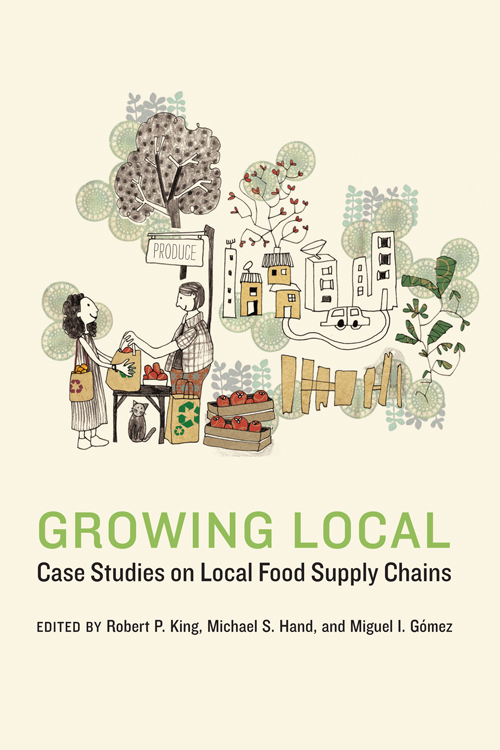
The subject is highly important to the current and future development of the food industry, especially for local alternatives.... [Growing Local] makes a valuable contribution to our understanding of
contemporary issues in the food system.
Charles Francis, professor of agronomy and horticulture and the former director of the Center for Sustainable Agriculture Systems at the University of Nebraska
Growing Local
Our Sustainable Future
Series Editors
Charles A. Francis
University of NebraskaLincoln
Cornelia Flora
Iowa State University
Tom Lynch
University of NebraskaLincoln
Growing Local
Case Studies on Local Food Supply Chains
Edited by Robert P. King, Michael S. Hand, and Miguel I. Gmez
University of Nebraska Press | Lincoln and London
2014 by the Board of Regents of the University of Nebraska
Contributions by Michael Hand were written and prepared in his capacity as a U.S. government employee on official time and therefore are in the public domain and not subject to copyright.
The views expressed in this volume are the authors and do not necessarily represent the views of the U.S. Department of Agriculture.
Acknowledgment for the use of copyrighted material appears on page 136, which constitutes an extension of the copyright page.
Cover image supplied by Ruchi Shah/Media Bakery.
Library of Congress Cataloging-in-Publication Data
Growing local: case studies on local food supply chains / edited by Robert P. King, Michael S. Hand, and Miguel I. Gmez.
pages cm.(Our sustainable future)
Case studies on local food supply chains
Includes bibliographical references and index.
ISBN 978-0-8032-5485-5 (cloth: alk. paper)
ISBN 978-0-8032-5816-7 (epub)
ISBN 978-0-8032-5819-8 (mobi)
ISBN 978-0-8032-5699-6 (pdf)
1. Food supplyUnited StatesCase studies. 2. Local foodsUnited StatesCase studies. I. King, Robert Philip, 1950 II. Hand, Michael S. (Michael Stephen), 1977 III. Gmez, Miguel I. IV. Title: Case studies on local food supply chains. V. Series: Our sustainable future.
HD 9005. G 76 2014
338.1'973dc23
2014024550
The publisher does not have any control over and does not assume any responsibility for author or third-party websites or their content.
Contents
Miguel I. Gmez and Michael S. Hand
Robert P. King, Michael S. Hand, and Gigi DiGiacomo
Miguel I. Gmez, Edward W. McLaughlin, and Kristen S. Park
Larry Lev
Shermain D. Hardesty
Robert P. King, Gigi DiGiacomo, and Gerald F. Ortmann
Michael S. Hand and Kate Clancy
Kristen S. Park, Miguel I. Gmez, Gerald F. Ortmann, and Jeffrey Horwich
Larry Lev, Michael S. Hand, and Gigi DiGiacomo
Edward W. McLaughlin, Shermain D. Hardesty, and Miguel I. Gmez
Michael S. Hand and Kate Clancy
Robert P. King, Miguel I. Gmez, and Michael S. Hand
The research in this volume was supported through cooperative research funding from the USDA Economic Research Service ( ERS ) in Washington DC . The authors thank Mary Bohman of ERS for her thoughtful guidance and support of this research project. Numerous workshop and seminar participants also provided helpful comments during the preparation of this book. The views expressed in this volume are the authors and do not necessarily represent the views of the U.S. Department of Agriculture.
Data collection assistance for market prices and product availability was provided by Jun Lee (Cornell University), Amber Ma (University of CaliforniaDavis), Katherine Ralston ( ERS ), Joe Rodriguez (Oregon State University), and Sarah Swan (University of Minnesota). Lisa Jore and Sue Pohlod, both from the Department of Applied Economics at the University of Minnesota, assisted with the editing and assembly of this book.
Finally, the authors thank the many farmers, vendors, market managers, and business operators who submitted to interviews and gave their time to provide information about their operations. Some are identified where they are quoted, while others requested confidentiality; all were important to this project. This research would not have been possible without their generous contributions.
Understanding Local Food Systems from a Supply Chain Perspective
From Farms to Consumers
An Introduction to Supply Chains for Local Foods
Miguel I. Gmez and Michael S. Hand
The term local foods conjures vivid and specific images among consumers, food connoisseurs, and scholars. Many people think of the fresh young vegetables and the first ripe strawberries that appear in farmers markets in the spring and the apples and winter squash that herald falls arrival at the end of the market season. For others, what comes to mind is a roadside farm stand, discovered by accident during a Saturday drive out of town and packed with a variety of straight-from-the-field produce. More and more, the picture of local foods also includes signs in supermarkets identifying certain products as local, and stories from farmers about how their food was produced.
These images are a growing part of how people think about their food when they fill their grocery cart (or canvas bag or farm share box). Yet these images tell only a part of the story. Where we purchase food and where it comes from (in particular, its geographic origin) does not always reveal how local food gets to the point of sale or why it is sold touting some characteristics and not others. The promotional flyer we might read at the supermarket meat counter about the nearby farmer of grass-fed beef likely does not describe the importance of interdependent business relationships between the farm, slaughterhouse, and retailer. Neither does the bin full of the seasons first apples at the farmers market tell you about the growers significant investment in transportation and marketing activities that allow him to sell in multiple markets each week.
The stories behind the images describe the people, processes, and relationshipsthat is, all the segments of the supply chainthat put local foods into consumers hands. The supply chains for local foods, like those of more mainstream products that account for the vast majority of food consumed in the United States, remain largely hidden from consumer view. Yet it is within these supply chains that the food characteristics and the information consumers value are determined. As local foods become a more important part of the U.S. food system, our understanding of the inner workings of food supply chains deserves more attention.
A Growing Trend in Food and Agriculture
U.S. consumer interest in local foods has increased sharply in recent years. Although sales of locally grown food still account for only a small share of total domestic food sales, this is believed to be one of the fastest growing segments of the U.S. food system. Interest in local foods stems from a variety of potential and perceived benefits, including economic, environmental, health, food safety, and rural development benefits. Some believe that local food supply chains provide several advantages over the mainstream supply chains that provide products to supermarkets. These might include preserving local landscapes and family farms, strengthening of local and regional economies, and providing fresher, higher quality food products. Certain consumer segments are actively seeking local foods in a variety of outlets, and there is evidence from anecdotal observations and from controlled economic experiments that some consumers are willing to pay higher prices for local foods.
These trends are prompting changes across a spectrum of food supply chains. Farmers increased utilization of direct marketing channels such as farmers markets and a variety of community supported agriculture business models is providing an important market mechanism linking farmers and consumers.resilient and quick to adapt, see these trends as an opportunity to satisfy customer demand for local foods and to increase customer loyalty. However, it is not clear that this is an effective channel for meeting the rapidly growing demand for local food products; and there is uncertainty about the long run prospects for a significant re-localization of supermarket offerings.
Next page
